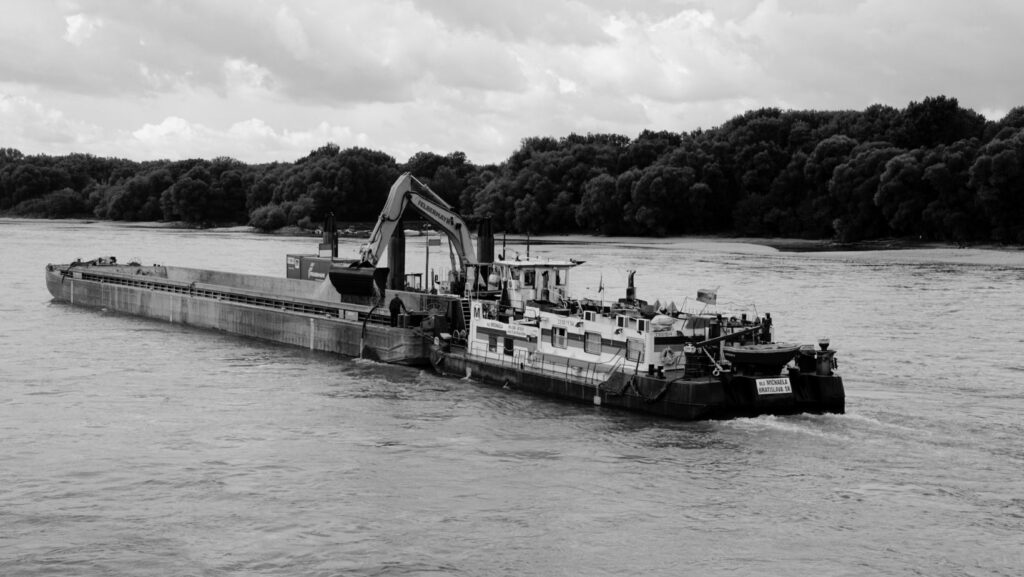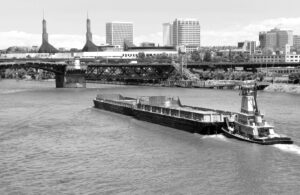
The Vessel General Permit (VGP) issued by the Environmental Protection Agency (EPA) in the United States represents a critical regulatory framework designed to minimize the environmental impact of vessel discharges. Compliance with the VGP requirements poses unique challenges, especially for the barge operators who are subject to its requirements. While no single article can cover the nuances of compliance for every kind of vessel, this article serves as an introduction to compliance with the VGP. With the right tools compliance can be had without being exceedingly burdensome.
Who Does the VGP Apply To?
The VGP is part of the National Pollutant Discharge Elimination System (NPDES), aiming to protect the nation’s waters from pollution by regulating incidental or accidental discharges. It applies to all non-recreational, non-military vessels at least 79 feet in length that discharge in US waters, or those of any length that discharge ballast water.
One common mistake barge operators make is assuming that if a barge is unmanned or empty while being towed, it is not subject to EPA regulations. The EPA explicitly explains that “[e]mpty or unmanned barges are typically still considered to be operating in a capacity as a means of transportation unless they have been removed from active service. Unmanned or empty barges are treated the same as any other manned or loaded barge under the general permit and thus are eligible to obtain the required NPDES permit coverage under the VGP.”
Compliance with the VGP
The Vessel General Permit covers a wide range of discharge types, including ballast water, bilge water, and gray water. Compliance with these regulations requires vessels to implement best management practices, conduct regular inspections, and, in some cases, install specific treatment technologies. In the case of unmanned barges, the following rules are the most relevant:
Permit
To comply with the VGP, vessels that meet the above criteria must hold one of the following two permits:
For large vessels:
If a vessel is 300 gross tons or more or can discharge more than eight cubic meters of ballast water, the owner or operator must submit a Notice of Intent electronically through the VGP eNOI system.
For all other vessels:
Vessels smaller than 300 gross tons that cannot discharge more than eight cubic meters of ballast water must print and fill out the VGP Permit Authorization and Record of Inspection (PARI) Form, also known as Appendix K.
Cargo Residue and Runoff
The first of the VGP’s Best Management Practices, or BMPs, is designed to eliminate the amount of cargo residue, garbage, and incidental objects that could be swept into the waterways by wind or water. This is particularly important for barge operators because of cargo loading and unloading frequency and the desire to clean barges regularly, especially when switching between cargo types. Per the VGP, barge operators must minimize the amount of remaining cargo residue by a broom clean or equivalent process before washing a cargo compartment or tank and discharging the wash water overboard.
The VGP also requires regular inspections (see below section), which require crew members to look for any garbage, exposed raw materials, oil, or other visible pollutants and remediate the situation as necessary.
Bilgewater Management
The VGP requires vessels to minimize the discharge of bilgewater in US waters. To accomplish this goal, it recommends minimizing the production of bilgewater and disposing of bilgewater on shore at the appropriate facilities, if possible. Operators are also prohibited from dumping bilgewater with a visible sheen, which would indicate contamination with oil or other substances. Nor may operators use dispersants, detergents, emulsifiers, chemicals, or other substances that remove the appearance of a visible sheen to circumvent this requirement. Furthermore, operators may not add substances to the water that aren’t a result of the normal operation of a vessel.
Water accumulating in the cargo hopper may be pumped overboard if the above conditions are met and it doesn’t contain excessive amounts of solids or particulates. If the water is overly contaminated, it must be pumped by a facility with proper licensing to do so in a given state. The only exception to this rule is if water must be pumped to prevent the imminent sinking of a barge, in which case it is permitted, but the non-compliant discharge must be documented and reported.

Inspections
The VGP requires three kinds of inspections: routine visual inspections, comprehensive annual inspections, and drydock inspections. Routine visual inspections should occur at least once per week or once per voyage, whichever is more frequent. They should include a visual inspection of the deck for garbage, cargo residue, oil, and miscellaneous discarded items, which should all be promptly removed if detected. Likewise, void spaces and the cargo hopper should be inspected for the presence of water, which should be removed in compliance with water disposal requirements.
Vessels are also subject to an annual comprehensive inspection, which for barges pertains to the hull about the waterline for fouling organisms or flaking paint. The owner/operator of the vessel can perform the inspection if appropriately trained or can outsource the inspection to a qualified technician. If the vessel is brought into drydock, the hull below the waterline should be inspected in the same way as above, and any organisms found should be neutralized or removed.
Recordkeeping
The VGP also requires detailed recordkeeping. Crew should log the following information for each visual inspection:
- Date and time of inspection
- Person conducting the inspection
- All locations inspected
- Description of any potential problems identified
- Signature of inspector
The comprehensive annual inspection report should include the above plus the following:
- Areas not inspected because the vessel was not in dry dock
- Description of any potential problems identified
Dry dock inspection reports must include the same information as a visual inspection, plus an indication that the hull was inspected for living organisms and that any found were properly treated.
If the inspector finds the barge out of compliance, they may need to complete a corrective action assessment detailing the nature and cause of the problem and the actions taken to resolve it.
Automating Your VGP Compliance
The key to success with VGP compliance lies in being methodical. Vessel operators must ensure crews are trained in the relevant requirements, perform them regularly, and correctly document them when they do. While noncompliance can get you in trouble, being fully compliant but failing to keep adequate records can get you into just as much trouble!
This is where BargeOps can help. BargeOps helps operators streamline barge operations, including digitizing VGP documentation, automatically filling out known information, and prompting crew members to fill out the remaining information when required. With a real-time connection back to land, operators can monitor compliance and ensure crews are doing what’s required. To learn more about what BargeOps can do for your barging operations, contact us for a free demo today!


